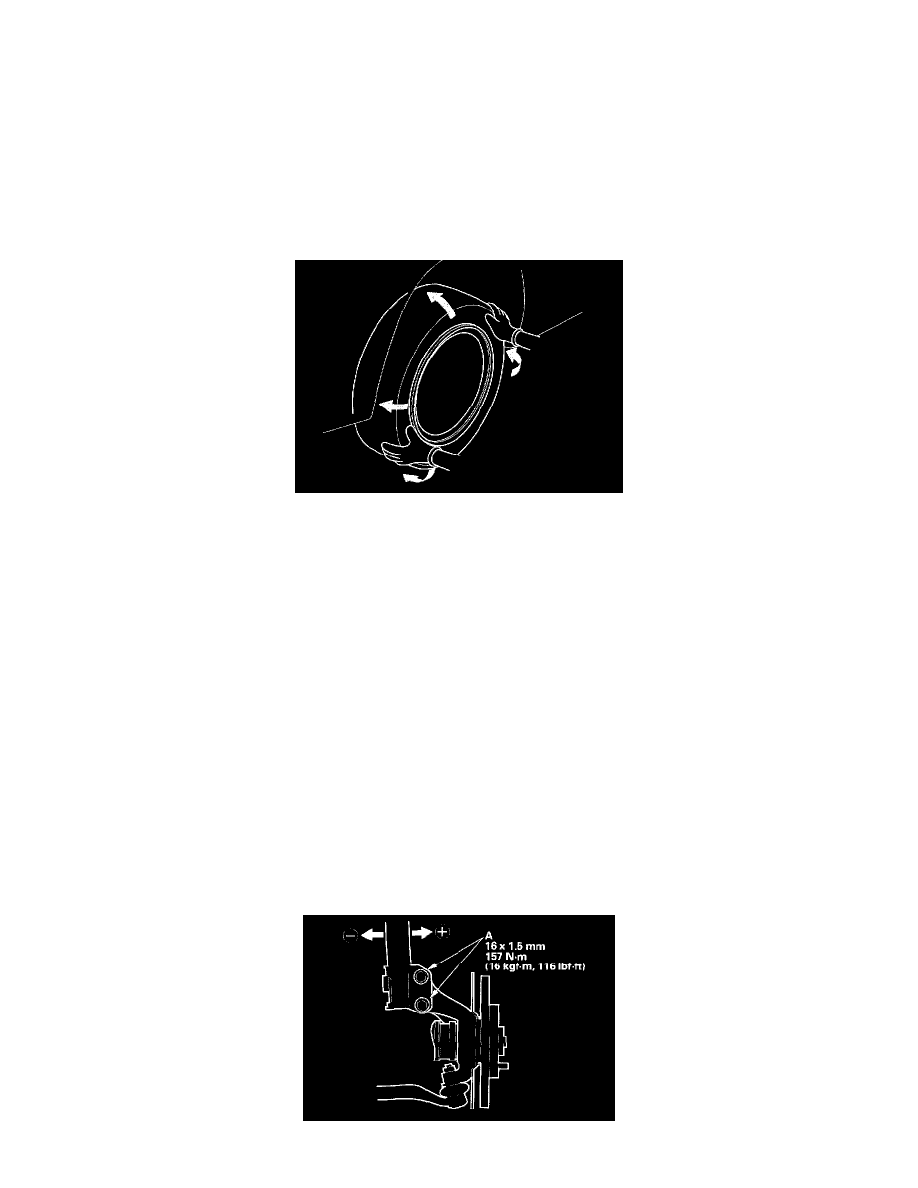Pilot V6-3.5L (2004)

Alignment: Service and Repair
Wheel Alignment
The suspension can be adjusted for front and rear toe.
Pre-Alignment Checks
For proper inspection and adjustment of the wheel alignment, do these checks:
1. Release the parking brake to avoid an incorrect measurement.
2. Make sure the suspension is not modified.
3. Check the tire size and tire pressure.
Tire size: 235/70 R16 104S
Tire pressure: 220 kPa (2.2 kgf/cm2, 32 psi)
4. Check the runout of the wheels and tires.
5. Check the suspension ball joints. (Hold a wheel with your hands, and move it up and down and right and left to check for wobbling.)
6. Move the suspension up and down several times to stabilize the suspension.
Caster Inspection
Use commercially available computerized four wheel alignment equipment to measure wheel alignment (caster, camber, toe, and turning angle).
Follow the equipment manufacturer's instructions.
Check the caster angle.
Caster angle: 1°53' ± 1°
-
If the measurement is within specifications, measure the camber angle.
-
If the measurement is not within specifications, check for bent or damaged suspension components.
Camber Inspection
Use commercially-available computerized four wheel alignment equipment to measure wheel alignment (caster, camber, toe, and turning angle).
Follow the equipment manufacturer's instructions.
Check the camber angle.
Camber angle:
Front: 0°30' ± 1°
Rear: 0°30' ± 45'
-
If the measurement for the front camber is outside the specification, go to front camber adjustment.
-
If the measurement for the rear camber is outside the specification, check for bent or damaged suspension components.
Front Camber Adjustment
1. Raise the front of the vehicle, and make sure it is securely supported. Remove the front wheels.
